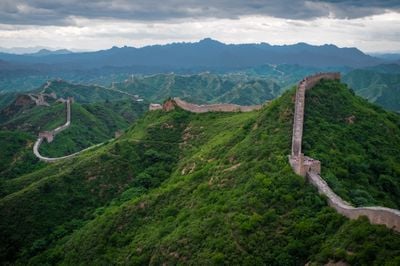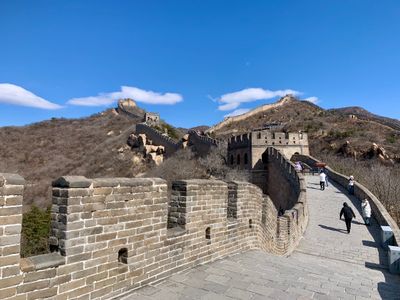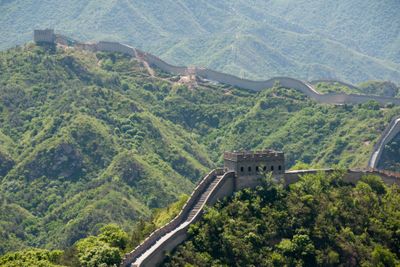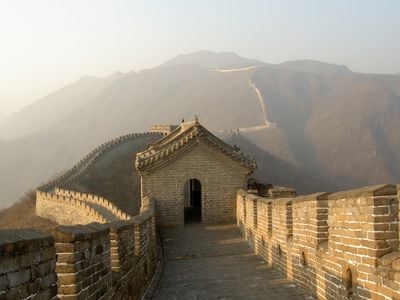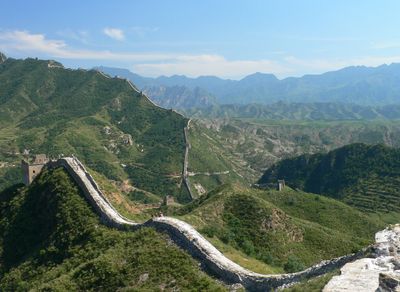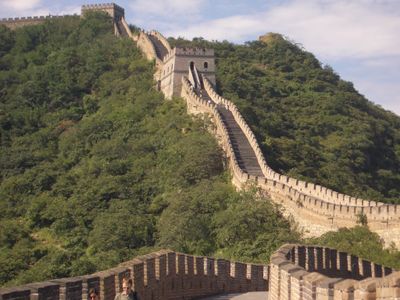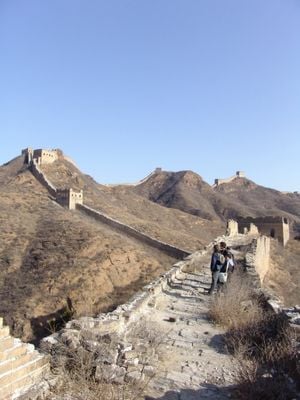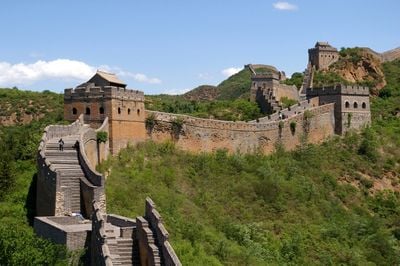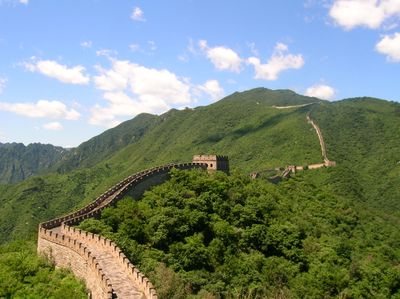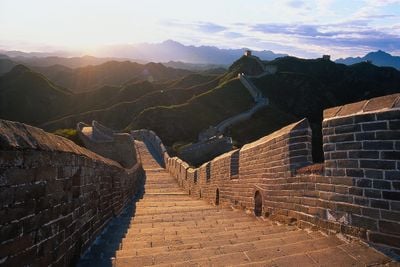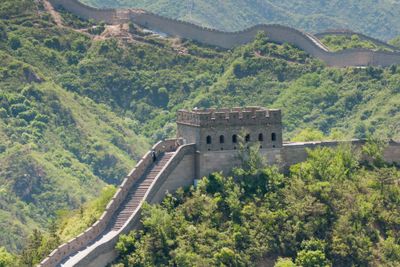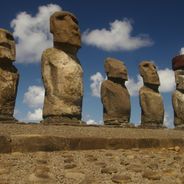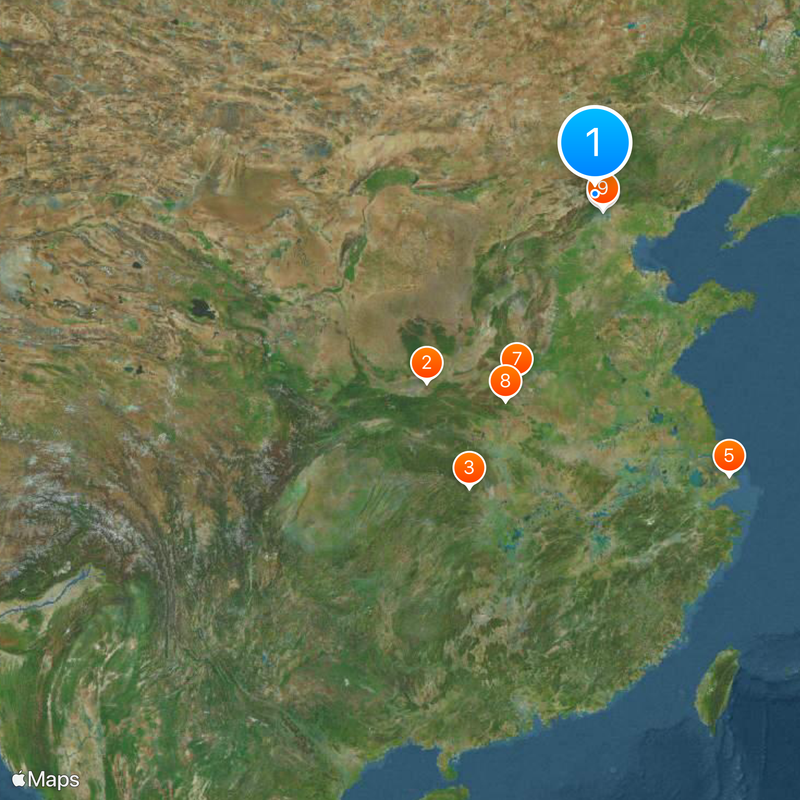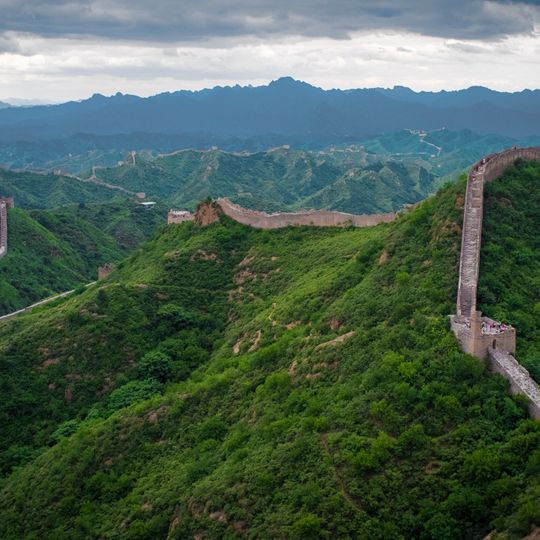
Great Wall of China, Fortified line across northern China spanning over 21,000 kilometers through multiple provinces.
This defense network consists of interconnected fortifications made from limestone, rammed earth, bricks, and stone that stretch across mountains, deserts, and plains. Watchtowers rise at intervals along ridges, with walls of varying height and width that follow the terrain, leaving many sections today in different states of preservation.
Early sections appeared around 700 BC under separate Chinese states, before Qin Shi Huangdi connected them into a unified system during the Qin Dynasty. Major expansion took place during the Ming Dynasty between 1368 and 1644, when most of the stone structures visible today were built.
Visitors observe people walking on the ramparts, flying kites, and photographing groups in traditional clothing, while vendors offer calligraphy and souvenirs nearby. Families gather on weekends to climb the steps together and enjoy the view, treating the monument as a place of personal connection to the past.
Popular sections like Badaling and Mutianyu open daily in the morning and close in late afternoon, with hours varying by season. Sturdy footwear is important because the steps are steep and uneven, and most visitors need two to three hours for a walk through.
Contrary to common claims, it is not visible from the Moon with the naked eye, and its construction relied on sticky rice mortar made from rice soup and lime to hold bricks together. Many sections run through remote areas that few tourists reach, with vegetation slowly growing over abandoned parts.
Location: Hebei
Location: Beijing
Location: Tianjin
Location: Shanxi
Location: Inner Mongolia
Location: Shaanxi
Location: Ningxia
Location: Gansu
Location: Xinjiang
Location: Shandong
Location: Henan
Location: Hubei
Location: Hunan
Location: Sichuan
Location: Qinghai
Inception: 700s BCE
Creator: Qin Shi Huangdi
Height: 7 m
Width: 4.5 m
Made from material: limestone
Address: Huairou District, China, 101406
Opening Hours: Monday-Friday 07:30-18:00; Saturday-Sunday 07:30-18:30
Phone: +861061626022
Website: http://thegreatwall.com.cn/en
GPS coordinates: 40.41667,116.08333
Latest update: December 13, 2025 05:28

These archaeological sites document the development of human civilizations across thousands of years. They range from the earliest known temple structures like Göbekli Tepe in Turkey, dated to around 9500 BCE, to the preserved remains of Pompeii, frozen in time by a volcanic eruption in 79 CE. Each...

From the highest peaks to coastal cliffs, this collection brings together geographically significant observation points across all continents. The locations offer views of mountain ranges, waterfalls, deserts, oceans, and notable architectural structures. The selection includes the Great Wall near...
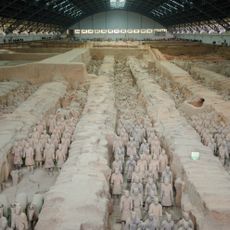
Terracotta Army
901.4 km
Three Gorges Dam
1162 km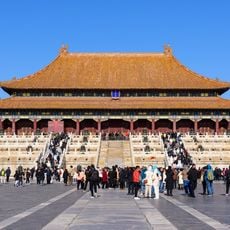
Forbidden City
61.6 km
Shanghai Tower
1132.4 km
Tiananmen Square
62.7 km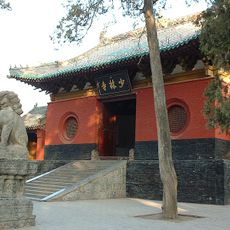
Shaolin Monastery
714.1 km
Spring Temple Buddha
806.4 km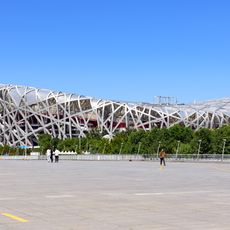
Beijing National Stadium
54.1 km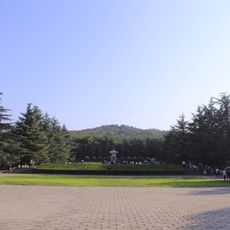
Mausoleum of the First Qin Emperor
902.8 km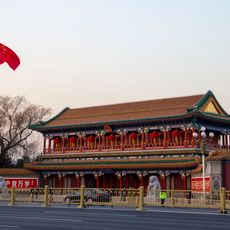
Zhongnanhai
61.7 km
Danyang–Kunshan Grand Bridge
1046.3 km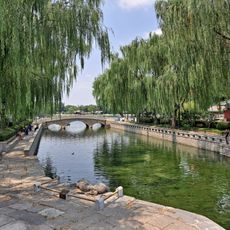
Grand Canal
1191 km
Bogibeel Bridge
2433.9 km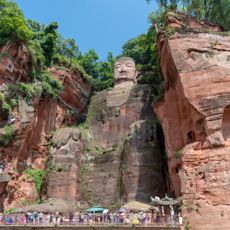
Leshan Giant Buddha
1647.6 km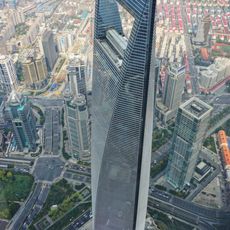
Shanghai World Financial Center
1132.3 km
Summer Palace
49.3 km
Temple of Heaven
65.5 km
The Bund
1131.6 km
Zhangjiajie National Forest Park
1337.8 km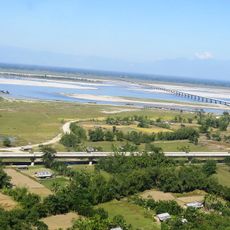
Dr. Bhupen Hazarika Bridge
2337.7 km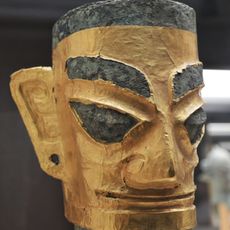
Sanxingdui
1498.7 km
Old Summer Palace
48.9 km
Huangshan
1161.1 km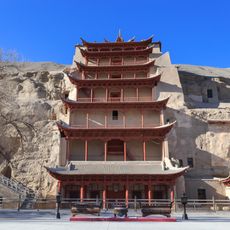
Mogao Caves
1804.7 km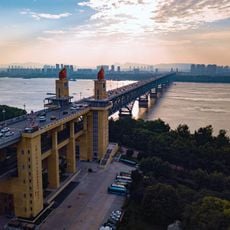
Nanjing Yangtze River Bridge
954.2 km
Tron Lightcycle Power Run
1147.6 km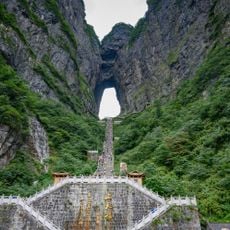
Tianmen Mountain
1364.5 km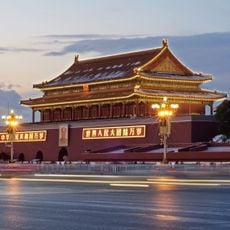
Tiananmen
62.5 kmReal people, real opinions — but not verified.
Visited this place? Tap the stars to rate it and share your experience / photos with the community! Try now! You can cancel it anytime.
The Great Wall of China evokes a sense of freedom and wonder. In front of its vastness, a silence descends, as if the world slows down for a moment. The gaze gets lost in its endless curves, and the mind escapes far from daily life.
A mythical place that can be approached from different points. Beware, some accesses to the site are overcrowded and others steep!
Discover hidden gems everywhere you go!
From secret cafés to breathtaking viewpoints, skip the crowded tourist spots and find places that match your style. Our app makes it easy with voice search, smart filtering, route optimization, and insider tips from travelers worldwide. Download now for the complete mobile experience.

A unique approach to discovering new places❞
— Le Figaro
All the places worth exploring❞
— France Info
A tailor-made excursion in just a few clicks❞
— 20 Minutes
